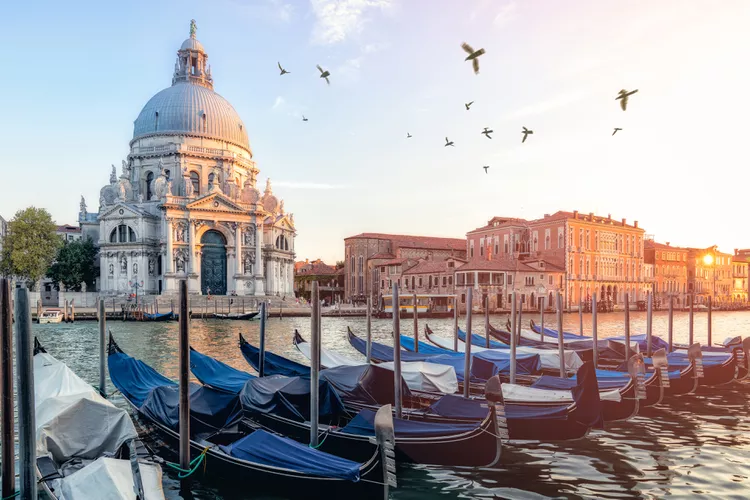1. Introduction to Venice
Venice, one of Italy’s top cities, is comprised of six sestieri (singular sestiere) or neighborhoods. The Grand Canal, which is the city’s main waterway, not only separates these neighborhoods but also provides residents and visitors with a primary mode of transportation. Take a look at this sestiere map to learn more about each neighborhood, along with how to use Venice’s vaporetto or public transportation system.
2. Venice Sestiere Map

This sestiere map highlights various locations throughout Venice. Although San Marco is the most frequently visited by tourists, each sestiere has its own unique character and tourist attractions. For visitors, it’s important to note that popular neighborhoods are located on each side of the Grand Canal. Consequently, you will need to consider various transportation options based on your chosen areas to explore.
3. San Marco

San Marco is the heart of Venice and the sestiere most often visited by tourists. Piazza San Marco, known as St. Mark’s Square, is Venice’s main square. Moreover, elegant historic buildings and pricey cafes surround the square, some featuring live music in the evenings. This sestiere is home to prominent tourist sites such as Saint Mark’s Basilica, the Doge’s Palace, the Campanile (bell tower), and the Correr Museum.
4. Dorsoduro

Dorsoduro, a large sestiere located across the Accademia Bridge from San Marco, is near Piazzale Roma (where buses and taxis arrive). This neighborhood is a must-visit for art lovers, hosting the Accademia Museum and the Guggenheim Art Collection, two of Venice’s top museums.
Along one border of Dorsoduro resides the Guidecca Canal, offering tranquil, scenic walkways. For food enthusiasts, Campo Santa Margherita is a vibrant spot during the day, showcasing fish and vegetable markets. Additionally, many students reside in this sestiere, as Venice’s university system is largely based here, consequently providing abundant nightlife options.
5. San Polo

The Rialto Bridge across the Grand Canal connects San Marco and San Polo, which is one of the oldest parts of Venice. At the foot of the Rialto Bridge in San Polo, there exists a massive fish and open-air vegetable market, making it an exciting destination early in the morning. San Polo also houses many food shops, bars, and restaurants. It’s a small yet charming sestiere with remnants of its medieval roots, which can be explored at Santa Maria Gloriosa de Frari.
6. Santa Croce Sestiere

Santa Croce lies adjacent to San Polo along the Grand Canal. For those arriving in Venice by bus or taxi, this is the closest sestiere. Santa Croce is not only one of the oldest areas in Venice but also the least frequented by tourists. Should this sestiere be on your itinerary, exploring its culinary options is a must. It’s home to one of Venice’s most expensive restaurants, la Zucca, along with many beloved pizzerie.
7. Cannaregio

Cannaregio, situated across the Grand Canal from Santa Croce, is a sizable sestiere stretching from the Venezia Santa Lucia Train Station to the Rialto Bridge. The Cannaregio Canal is the second-largest canal in Venice, connecting the lagoon with the Grand Canal. This lively neighborhood is known for its picturesque squares and canals, in addition to its local flair provided by its many residents. The Jewish Ghetto can be explored here, along with Fondamenta Misericordia, a great location for discovering various restaurants, shops, cafes, and wine bars.
8. Castello

Castello, located on the opposite side of San Marco, is home to the Venetian Arsenale, an ancient shipyard. This unique area is perfect for exploration, as it’s less crowded with tourists compared to San Marco. Campo Santa Maria Formosa, the main square, is a delightful spot brimming with history and art.
If you wish to visit nearby islands, numerous boats depart regularly for the islands of Murano and Burano from Fondamente Nove, which is the walkway along the northern lagoon.
9. Venice Vaporetto

Venice’s vaporetti (singular vaporetto) serve as water buses, which are the city’s public transportation system. The main vaporetto travels along the Grand Canal, linking the train and bus stations with numerous stops at each sestiere. To maximize the benefits of this transportation mode, familiarize yourself with using the vaporetti, including ticket prices, schedules, and purchasing travel cards.
10. Venice Lido

Consider the Venice Lido for a stay if you are interested in beaches, nightlife, the Venice Film Festival, or the convenience of driving your car to your accommodations. From the Lido, a short vaporetto ride leads directly to Saint Mark’s Square.
11. Top Venice Islands

The islands of the Venetian lagoon can be easily visited from Venice. Murano, renowned for glassmaking, and the colorful island of Burano are among the most popular destinations to explore.
12. Venice Airport Transportation

The Venice Marco Polo Airport is located nearly four miles from Venice itself. Various transportation options from the airport to different neighborhoods in Venice include the city bus system, shared vehicle services, or car rentals. Depending on your party size and the amount of luggage you’re carrying, the best and most economical transportation option to your chosen sestiere will become apparent.





